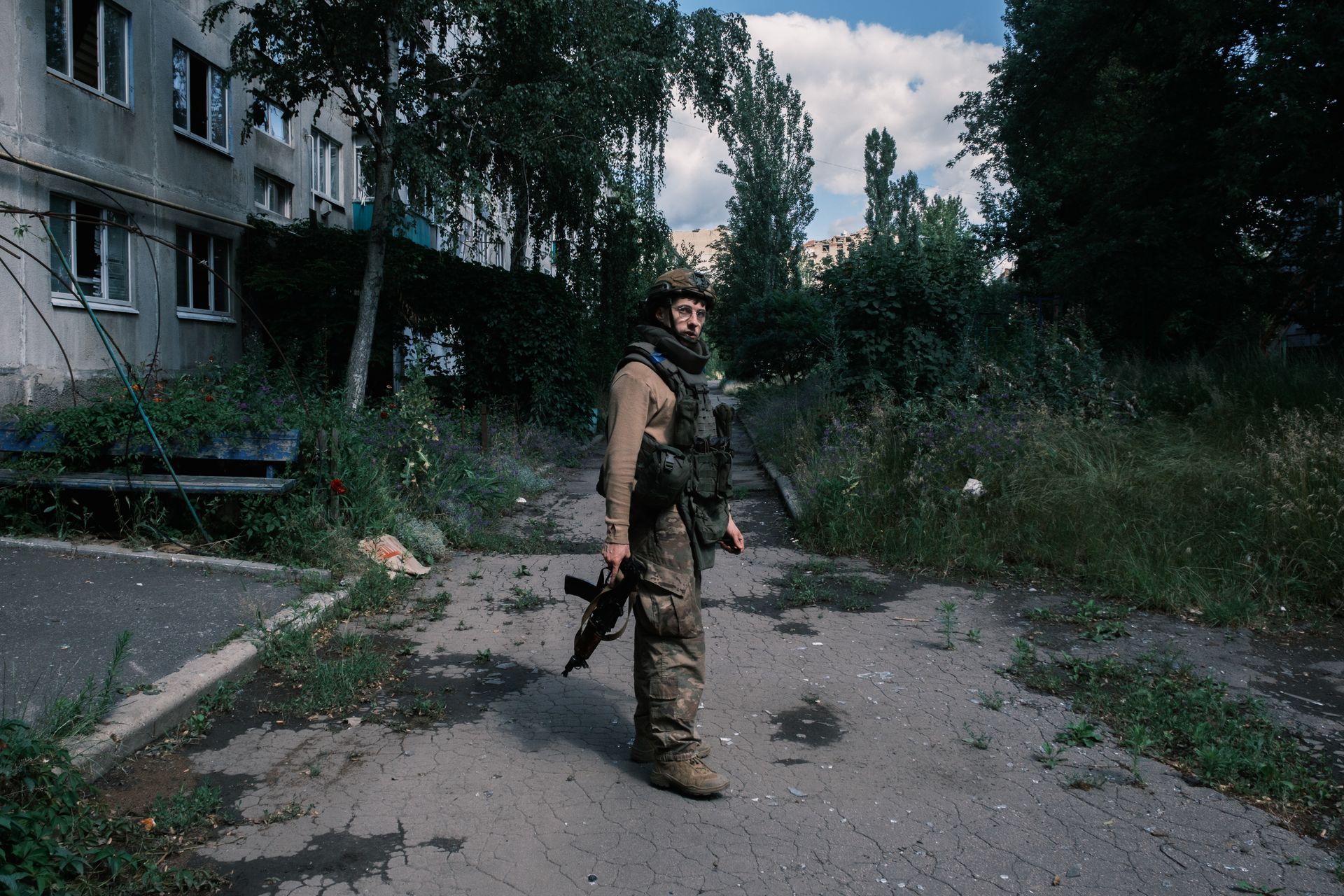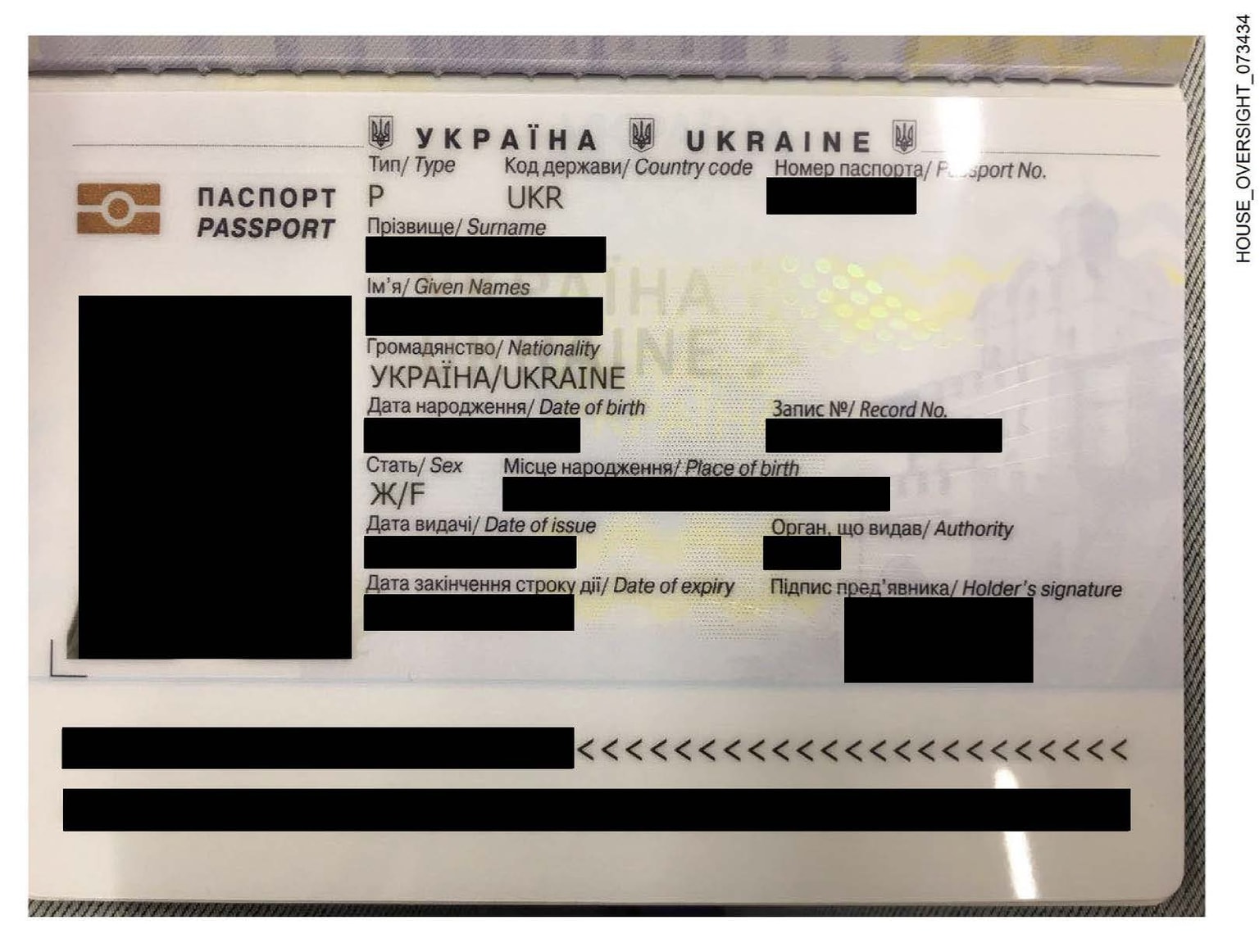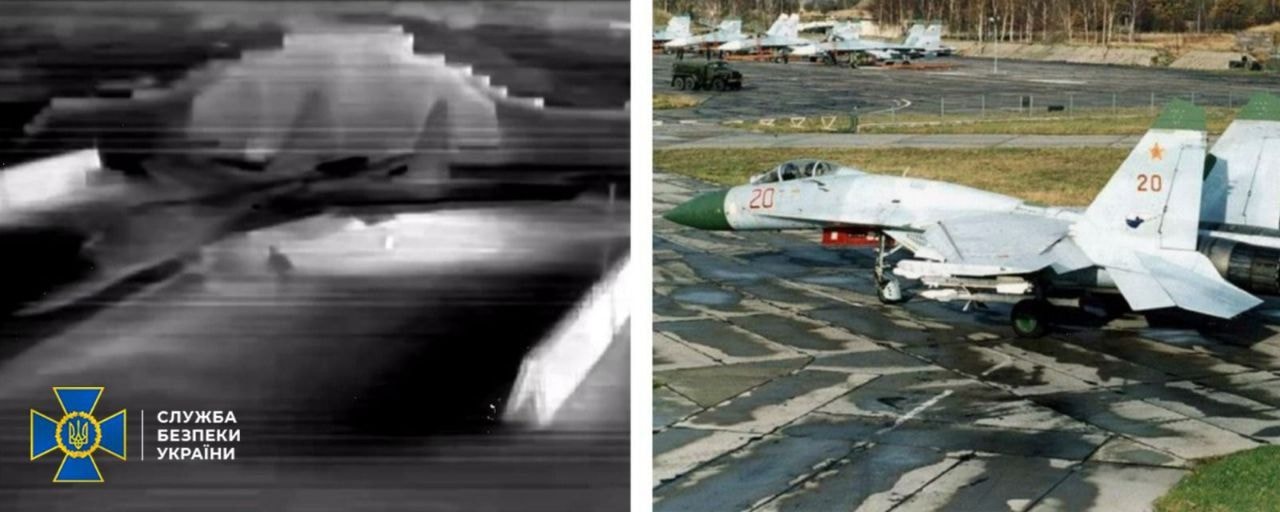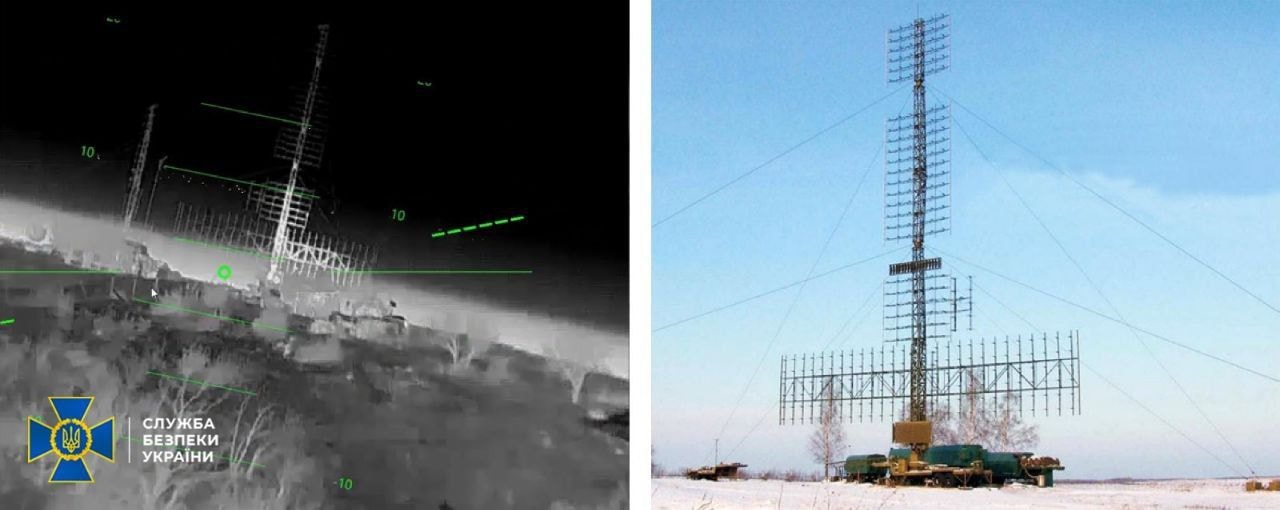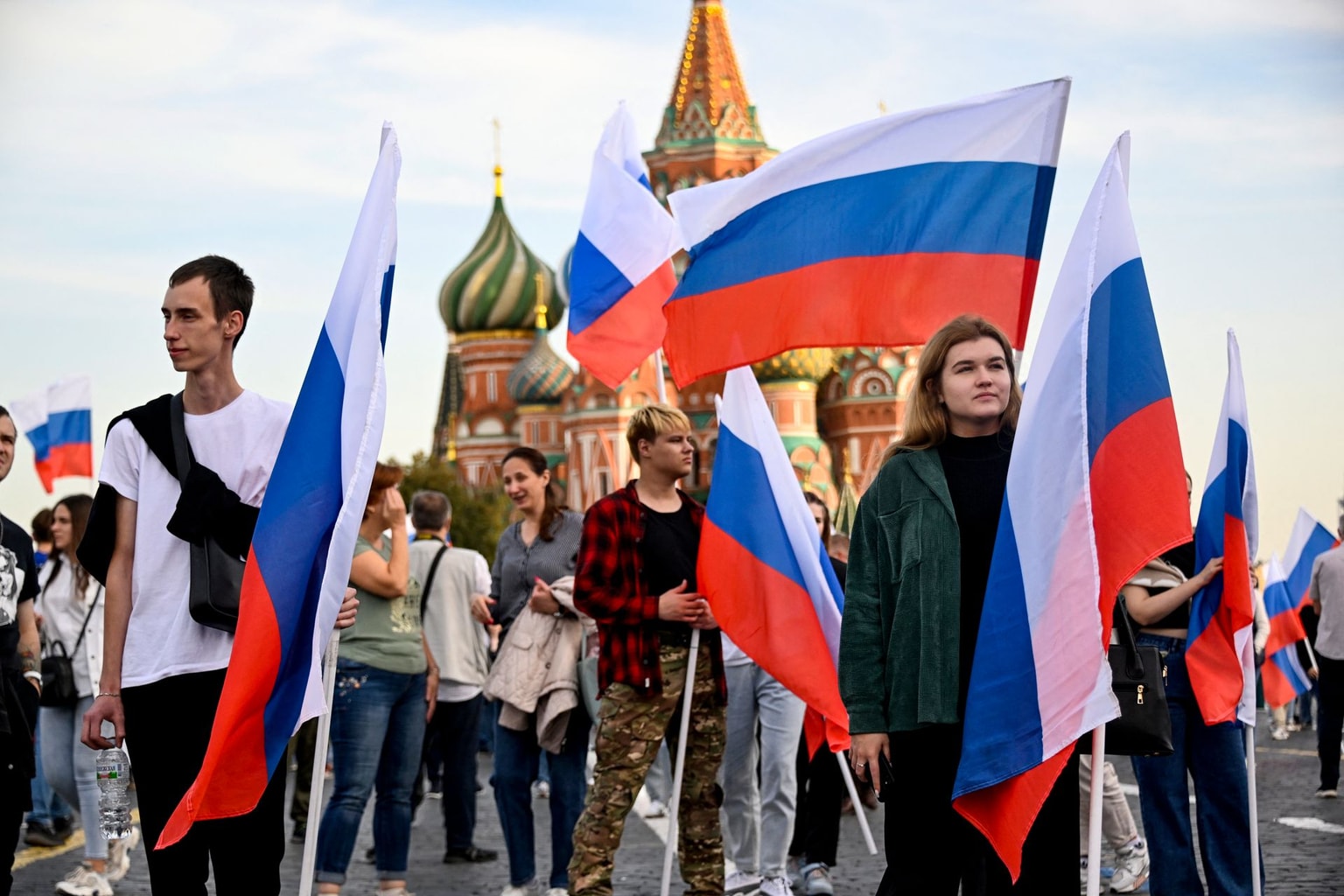
'We spot them, we destroy them' — Ukraine fights for Kostiantynivka as Russia closes in on three sides
Russia's three-pronged attack on the key city has been boosted by its best drone unit, and Ukrainian brigades have had to adapt quickly to stay in the fight.
Soldiers of the Liubart Brigade drive through an anti-drone net near Kostiantynivka, Donetsk Oblast, on July 5, 2025. (Francis Farrell/The Kyiv Independent)
Editor’s Note: In accordance with the security protocols of the Ukrainian military, soldiers featured in this story are identified by first names and callsigns only.
KOSTIANTYNIVKA, Donetsk Oblast — As recently as four months ago, the drab streets of the city of Kostiantynivka were full of life. With all the trademark signs of a buzzing front-line hub — from dozens of soldiers lining up for coffee and pizza after coming back from positions to hardy civilians living, working and playing as usual — the true war was close, but never quite here.
Over spring and summer, Kostiantynivka turned into a city of shadows, with military cars speeding down the central streets on their way to positions, while the remaining civilians who have refused to evacuate shuffle between apartments and basements, scavenging for essentials.
In May, even the most stubborn holdouts of Ukrainian civilization — the Nova Poshta post office and the legendary Okko gas station — were forced to close after being targeted by Russian attacks.

Driving through Kostiantynivka with Ukrainian soldiers, burnt-out vehicles — both military and civilian — are visible on the road side, while anti-drone net tunnels have been hastily erected on scattered sections of the roads in and out.
With its streets emptied of almost all life, the battle for Kostiantynivka has begun in earnest: together with nearby Pokrovsk, the city is a major roadblock for Moscow’s ambitions to take all of Donetsk Oblast.
As of August 2025, Russian forces have come within around six kilometers of the city’s outskirts, according to open-source mapping project DeepState.
Though the saturation of the sky with strike drones on both sides has been a feature of the battlefield in Ukraine for over a year, this spring brought a new seismic shift to this part of the front line: the arrival of the elite Russian drone unit Rubicon.
While also operating standard radio first-person view (FPV) drones, Rubicon specializes in the use of long-range fiber optic FPVs, designed to reach and consistently strike Ukrainian targets deeper in the rear than was understood to be possible.
For Ukrainian brigades fighting in the area, the arrival of the Rubicon drone teams has been a challenge like no other, forcing a complete rethink of their front-line logistics chains. Some have managed better than others.

Meanwhile, Ukraine’s own top drone units have done the same, targeting every part of the Russian logistics chain and making vehicle-based attacks and logistics next to impossible.
The result: a deterioration of the concept of coherent front lines, replaced by a grey zone between the two sides that gets deeper and deadlier with every month.
The Kyiv Independent spent 24 hours with two drone teams of the Liubart Brigade, which was formed in spring this year out of the 5th battalion of Ukraine’s legendary Azov Brigade.
Sharing much of their core values and ranks full of some of Ukraine’s youngest, most motivated volunteer fighters, the two brigades now fight shoulder-to-shoulder on the southern edge of the Kostiantynivka salient.
Lightning rod
Kostiantynivka is the southern and easternmost of an agglomeration of four cities that form the logistical spine of Ukraine’s defense of Donetsk Oblast: connected to the city by a key highway is Druzhkivka to the north, followed by Kramatorsk and finally Sloviansk.
The prelude to the battle raging now for the city began over two years ago, in spring 2023.
After one of the most brutal battles in modern history, Russian forces led by the Wagner mercenary group finally took the last streets of nearby Bakhmut, 20 kilometers to the east.
At first, Kostiantynivka seemed to be Russian forces’ next target, but Ukrainian counterattacks in the area, part of the 2023 summer counteroffensive, pushed them back over the Siversky Donets-Donbas Canal running perpendicular between the city and Bakhmut.
Over 2024, Russia moved on Kostiantynivka with new momentum, targeting two key cities that stood in its way: Chasiv Yar in the northeast and Toretsk in the southeast.
In both cities, the attacking Russian forces ended up bogged down in heavy urban fighting that came with high casualties, but nonetheless slowly marched forward after destroying almost every building.
Meanwhile, as part of last year’s summer offensive on Pokrovsk to the southwest, Russian forces approached the T0504 highway connecting the city to Kostiantynivka and severing Ukrainian logistics between the two.

As of August 2025, Ukraine’s larger salient around Kostiantynivka is made up of a string of sectors, each acting as both its own battle with its own unique terrain and as part of an interconnected line of defense.
In the northeast is Chasiv Yar, which Russian forces claimed to complete the capture of on July 31. Kyiv has so far denied the claim, but open source mapping projects all point to the vast majority of the ruined city now being under Russian control.
Running south of Chasiv Yar toward Toretsk, Ukrainian lines have held firm along the canal for over a year, but recent Russian advances have breached this natural defense, pushing to within eight kilometers of Kostiantynivka.

Speaking to the Kyiv Independent on conditions of anonymity, an officer in the brigade defending the canal said that the gains had come mostly due to a critical shortage of infantry available to defend an increasingly porous front line of defense.
Ukraine’s defense remains stable in the city of Toretsk itself, while Liubart, together with the Azov Brigade itself as part of Ukraine’s new 1st National Guard Corps, is holding the sector just west of the city, defending both sides of a large reservoir and the high ground behind it.
The main threat now to Kostiantynivka is coming from the southwest, where a fresh Russian offensive push in spring punched across the T0504 highway, exploiting a weak link in Ukraine’s defense manned by less combat effective brigades.
Hunting shadows
Taking refuge from the midday sun in a shady treeline position south of Kostiantynivka, an FPV drone team from the Liubart Brigade makes flight after flight on the seventh day of their shift.
This way of waging war, one of propellers, goggles, screens, and 3D-printed bombs was unimaginable just five years ago; now it is routine.
One after another, the quadcopters, armed and brought out to their launch pads by 22-year-old sapper Oleksii “Siryi,” whizz off on their way to Russian forces.

But unlike in the dramatic videos of drone hits that have come to define how the war is fought, this team's targets are not Russian tanks, cars, or even soldiers, but greenery — designated spots on treelines where enemy movement has been spotted.
In a war dominated by drones, the arrival of summer has brought with it an extra advantage to the attacking side that goes beyond just the good weather.
Russian attacks here most often follow the treelines dividing up the vast fields of the Ukrainian steppe, and with Ukraine now relying more on drones to stop them, the concealment offered by the thick summer vegetation makes the job a lot harder.
The pilot, 21-year-old Ihor “Yuh,” is a man of few words, sipping his way through energy drinks as he directs one drone after another at spots in the vegetation designated by headquarters.
“We are mostly targeting bushes... I'm not a fan of nature,” he joked laconically in a short pause between flights.
“The bastards just keep disappearing in the thick foliage, we just need to strike nearby so they'll crawl out and show themselves.”

Sitting on a tree stump at one entrance to the position, 21-year-old Oleksandr “Lif” splits his work between the FPV team and work on smaller bomber drones, usually modified Chinese-made DJI Mavics, which work from much closer to the zero line, targeting Russian infantrymen directly.
Even in the short time he has been a soldier — he joined Azov at the beginning of 2025 right before his battalion split off to become Liubart — Lif has watched the fighting transform in front of his eyes.
“Previously, when we were facing more motorized and mechanized formations,” he said, “we would have columns of vehicles almost every day — up to 20 of them — they would come, we would destroy them, and by the afternoon we were just sitting and watching them burn.”
“Since April, it's been small infantry groups that creep in along the fields and trees, from 1-5 people.”
Russia’s increasingly tight stranglehold of Ukrainian logistics routes has coincided with an increasingly dire situation in the ranks of the country’s infantry, with even elite brigades like Liubart suffering from a manpower shortage.

As a result, said Lif, cases of Russian assault groups seeping through gaps in the porous Ukrainian lines are more and more common.
“We spot them, we destroy them, but with the wide sector that we have to defend they can often get through, and suddenly you realize that the enemy has made it behind your lines.
“Then we have to quickly find and destroy them, and go straight back to the next group coming up.”
Russia’s infantry assault-based approach to grinding forward in the fourth year of the full-scale war has come at a heavy price, with figures of Russian casualties from Ukraine’s General Staff consistently averaging over 1,000 per day in 2025.
But as long as Moscow continues to enjoy a steady stream of recruits, said Lif, its expensive tactics have a dark logic to them.
“They just have a massive quantity of manpower, and even though it seems like a dumb way to use them, you can see the result, especially thanks to their cutting off of our logistics,” he said.
“Whenever our supplies are delayed and we can't work, that's time that they have to make it through.”

Aerial lifeline
In a nearby treeline a few fields away, another Liubart drone team is also working around the clock, but the sound of the propellers come at a much lower pitch.
Returning to its launch pad from a routine flight is a Ukrainian-made heavy bomber drone going by its model name Kazhan, Ukrainian for “Bat.”
Together with its aptly-named competitor, the Vampire heavy bomber drone, the Bat made a name for itself in the early years of the full-scale war as a devastating night bomber, earning it the nickname “Baba Yaga” among Russian soldiers, who likened the drone to the witch from Slavic folklore.
Bomber drone positions like this might have once had caches of bombs to drop on the enemy, but now the primary payload is a little different.


In a large pile next to the dugout, dozens of green plastic bags await their turn to be strapped to the drone’s bomb bay and fly off to their recipients.
Carefully secured with tape and zip ties, each bag is marked with its contents: food, water, petrol, grenades, and anything else a soldier might need.
Extras, including tools like saws and axes or medicine can be added to the care packages at the last minute.
Instead of a fearsome Baba Yaga, the drones have instead adopted the role of a front-line Uber Eats, delivering essential supplies by air, 24/7.
In the dugout with remote in hand is 21-year-old pilot Artem “Shcheznyk,” who dropped out of his biomechanics studies to join Liubart.

“It's a universal drone,” he said as the Bat soared over the reservoir. ”It does distance mining, strike missions, but mostly logistics — which is super important right now.”
This bomber team covers the logistics of the entire battalion — that is, all those who work too close to the front line for vehicle supply runs: front-line infantry positions, as well as some drone and mortar teams.
The heightened need for drone-dropped logistics was a direct result of Rubicon’s arrival in their sector, recalled Borys “Forseti,” another heavy bomber operator who also switched this year from working on Mavic drones.
“We had a situation when an armored vehicle drove up to our drone positions and was hit, the driver was killed, somehow the rest of the team survived,” he said.
“At that point, we made a decision to do our logistics with heavy bombers and ground drones.”
Over 2024, a constant relay of heavy bomber flights used to be a common sound at nighttime — seen as safer for the drones to avoid being downed by small arms — so much so that they were often simply called “night bombers.”

This practice has also been turned on its head by the arrival of Rubicon. Russian drone teams have refined the art of spotting the heavy bombers’ thermal signature in flight and knocking them out of the sky with regular FPVs.
As a result, Ukrainian Bats and Vampires now choose to fly by day. More drones are lost, but as a sign scrawled in the Liubart dugout reminds its occupants: “drones are expendable material” — worth nothing compared to the life of a soldier.
As he approaches the coordinates assigned by headquarters, Shcheznyk’s Bat turns its camera straight down and drops its payload.
Sure enough, within seconds, the camouflage-clad figure of a Ukrainian soldier scurries out of the treeline and grabs the bag — another mission complete.
Shchezhnyk returns the drone home, where his teammates are already preparing fresh batteries and the next package. In one day, the crew can make up to 20 such flights.
In these new conditions, the crucial role his team plays in holding the line is not lost on the pilot.
“It's unlikely the front could hold without us,” he said.
“Especially in summer, the guys need water constantly, and they are not going to be carrying it 20 kilometers to positions, that's for sure.”

Only the beginning
For now, the Liubart Brigade’s sector south of the reservoir is holding firm, but in the neighboring sectors, the situation is less stable.
Over July, Russian forces successfully advanced upon the high ground into the villages of Yablunivka and Oleksandro-Kalynove, further endangering Ukrainian logistics routes in the area.
As Russia continues to make incremental gains in this part of Donetsk Oblast, the pocket into which the defense of Kostiantynivka has turned itself slowly gets deeper and more pronounced.
With further Russian gains, especially to the west, Kostiantynivka could be threatened by the same deteriorating situation now faced by nearby Pokrovsk.
But with consistently high Russian losses, and most brigades holding strong in their respective sectors, the course of the next few months is far from a foregone conclusion, said Lif.
“There will definitely be fighting for Kostiantynivka itself, the question is when,” he said.
“That depends on a few factors: how we are replenished, how effectively we can destroy the enemy, whether we get a chance to rest, because you can't work for 30 days in a row and still be effective.”

In the meantime, the young drone operators of the Liubart brigade drown out noise of peace talks and focus on the job at hand: to help their infantry stay alive and hold the line.
“I just see the real situation, it's very simple,” said Forseti.
“The enemy won't stop, they will keep taking our cities and territories unless we do something. Now, we are in defense, and we are stopping that from happening.”
Olena Zashko contributed to reporting.
You can watch the video version of this story here:

Note from the author:
Hi, this is Francis Farrell, the author of this piece. We’ve reported from over 30 front-line trips — often relying on cars rental from one lovely but slightly insane company that lets journalists drive them into a war zone. Having our own vehicle would make our field reporting quicker, safer, and truly independent. We’re currently fundraising to make that possible. Want to support or learn more? Contact our head of fundraising, Danica Stanciu, at d.stanciu@kyivindependent.com U.S. citizens can make tax-deductible donations through our 501(c)(3) partner.

